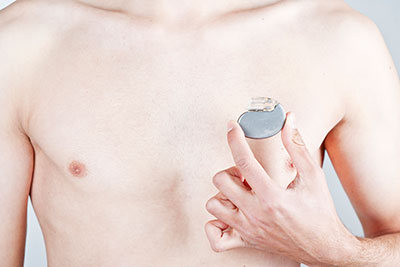

Pacemaker
A pacemaker is a small device that is powered by a battery. Pacemakers are designed to help control and monitor your heart rate. It helps the heartbeat in a regular rhythm. Pacemakers are needed for those who have a slow and irregular heart rhythm, less than 60 beats per minute.
A pacemaker can pace the heart's upper chambers (the atria), the lower chambers (the ventricles), or both chambers at times. Pacemakers may also be used to prevent the heart from going into fast, irregular rhythms. Once the pacemaker device is implanted the pulse generator monitors your heart rate. If your heart rate is too slow the device will send electrical pulses to your heart to increase your heart rate.
- A pulse generator, which includes the battery and several electronic circuits.
Wires, called leads, which are attached to the heart wall. Depending on the type of pacemaker you need, there may be one to three leads. The pacemaker is implanted under the skin and fatty tissue near the collarbone. If only one lead is needed, it is placed in the lower-right chamber (the right ventricle). If two leads are needed, the other lead is placed in the upper-right chamber (the right atrium). If three leads are needed, the third lead is placed in the left lower chamber (left ventricle) via the coronary sinus, which is called a biventricular pacemaker. The leads are then attached to the pacemaker (pulse generator).
Heart Center Quick Links
